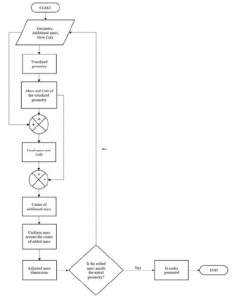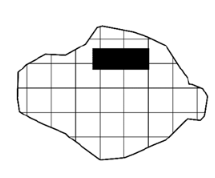In an article entitled “Tuning the Center of Gravity of 3D Printed Artifacts,” a pair of researchers discusses how they came up with an Algorithms-Aided Design (AAD) approach to shifting the center of gravity of 3D printed objects to a desired location.
“When the conventional design and fabrication pipeline of 3D printers and additive manufacturing machinery is employed, information about the interior of the artifacts is lost during the conversion of the design files to the STL file format,” the researchers point out. “This de facto file standard only stores the boundary information of the objects. Even though the designed artifact has heterogeneous interior in the Computer Aided Design (CAD) software, after the conversion it becomes a homogeneous solid.”
The researchers’ method does not require an STL file, as they used a query-based approach in which the built-in algorithm communicates with CAD software to acquire the necessary information about the design. First, the designed object in CAD software is decomposed into voxels of predefined sizes with AAD add-on software. Then the desired center of gravity and the amount of extra material available are entered by the user. This additional material is distributed to the voxels by the algorithm so that the center of gravity of the final object is at the predefined location.
“At the end of the design process, filling percentages of some voxels is altered which made the structure internally heterogeneous,” the researchers continue. “Then the final structure is directly sliced and the trajectories are converted to G-codes. Using the generated file, artifacts are printed on a desktop FFF printer. With the developed algorithm, we can modify the coordinates of the center of gravity of any shape by adjusting their interior structures and fabricate them on FFF printers.”
 Why do this? Shifting the center of gravity can create a more stable object, according to the researchers, without altering any of the visible physical characteristics of the object. They point out that several other methods have been used to do this, including using Voronoi cells to create a heterogeneous interior. The researchers took this concept and added more mass to increase the effect of the Voronoi cells.
Why do this? Shifting the center of gravity can create a more stable object, according to the researchers, without altering any of the visible physical characteristics of the object. They point out that several other methods have been used to do this, including using Voronoi cells to create a heterogeneous interior. The researchers took this concept and added more mass to increase the effect of the Voronoi cells.
The main objective of the algorithm the researchers developed is to create a secondary shape inside the input geometry so that the overall center of gravity of the 3D printed object is in the desired position. The algorithm is divided into several steps. First, voxelization of the initial geometry needs to be done to create a base structure to hold the additional mass to be placed inside the initial geometry. The mass and the center of gravity of the voxelized geometry are then calculated.
“After the amount of additional mass is determined, center coordinates of the additional mass are found,” the researchers state. “After the formation of the uniform box around the center of additional mass, it is aimed to fit the created box inside the initial geometry so that the integrity and the accuracy of the desired artifact are maintained. Lastly, direct slicing algorithm is run to obtain the G-codes to fabricate the final geometry with the modified interior structure.”
To test the process, the researchers 3D printed a low-poly bunny that could sit on various surfaces once the center of gravity was adjusted. The target center of gravity was set so that it could stand on its tail. This was successful, though there were some defects on the surface of the print due to the lack of support structures for overhanging areas. The researchers admit that their technique needs some modification, but that in the future it will likely “have a major impact on industries that seek for an out of the box solution with the help of using original designs.”
Authors of the study include Mert Keles and Ulas Yaman.
Discuss this and other 3D printing topics at 3DPrintBoard.com or share your thoughts below.
Subscribe to Our Email Newsletter
Stay up-to-date on all the latest news from the 3D printing industry and receive information and offers from third party vendors.
Print Services
Upload your 3D Models and get them printed quickly and efficiently.
You May Also Like
3D Printing News Briefs, June 11, 2025: Sustainability, Automotive Tooling, & More
We’re starting with sustainability news in today’s 3D Printing News Briefs, as EOS has strengthened its commitment on climate responsibility, and Zestep is making 3D printing filament out of eyewear...
3D Printing 50 Polymer Stand-In Parts for Tokamaks at the PPPL & Elytt Energy
Of all the world’s things, a tokamak is one of the hardest, most complex, expensive and exacting ones to make. These fusion energy devices make plasma, and use magnets to...
3D Printing News Briefs, May 17, 2025: Color-Changing Materials, Humanoid Robot, & More
We’re covering research innovations in today’s 3D Printing News Briefs! First, Penn Engineering developed 3D printed materials that change color under stress, and UC Berkeley researchers created an open source,...
Firehawk Aerospace Partners with JuggerBot 3D, Gets $1.25M from AFWERX for 3D Printed Propellants
Texas-based Firehawk Aerospace, an advanced energetic materials firm that works with aerospace and defense applications, announced a strategic partnership with JuggerBot 3D, an Ohio-based large-format 3D printer manufacturer. Together, the...



































